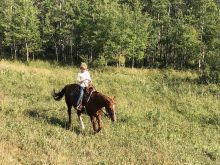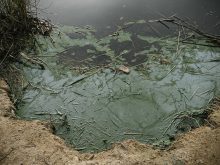In our area of the Interlake in Manitoba, the summer of 2018 was dry but many livestock producers had a surplus of feed left over from 2017. This year was worse. Sloughs were drying for the first time in recent memory. In the Shoal Lake area producers had to repair fence lines across sloughs for grazing that had been underwater for a very long time.
Dugouts on our farm started to get very low. There is only one pasture that depends on dugouts now, but it was very unsettling to realize the groundwater level had dropped this much. One of my concerns was a bear, perhaps looking for water, that seemed to be visiting too close to the buildings and night pens. To be good stewards of both our livestock and the wildlife, we decided to put a portable water system in a pasture and hope everyone could live together peacefully.
Read Also

Harvest wraps up and fall work begins
At the Eppich famly ranch in western Saskatchewan, the fall harvest was successful with few breakdowns, cows and calves have been sorted and a new tractor has arrived
Our stocking numbers are low this year, which was helpful. Supplying water for 14 adult head and whatever wildlife wanders through was not too daunting. Many studies say cattle grow better when they have fresh water too so the opportunity to experiment with a portable system was welcome.
Amassing the supplies for the water system was fairly easy. Our family doesn’t throw out anything that might come in handy one day and we have plenty of neighbours with the same habits.
The water trough is a repurposed bathtub that was sitting idle this summer. We have used it to experiment with fodder production in the past, but this summer we have no pigs or poultry so it was unused. We were very thankful for the neighbour that just happened to have a 1,200-litre cube tote for transporting water. They allowed us the use of it for the rest of the summer. These used totes are available on Kijiji for approximately $70 and up. The tote had been used for water for human consumption so there was no concern about chemical residues harming livestock. It is important to check on what totes were used for before buying one.
When storing a tote it is recommended to leave the tap open to discourage mould growth. We were very thankful for the neighbour that gifted us with the old wooden cart when they moved away years ago. The whole project cost less than $30 for plumbing supplies. The fittings were readily available at any local hardware.
Fittings needed to reduce the tote tank valve to a garden hose size included two- to 1.5-inch flexible rubber adapter (the kind used to go from ABS to copper piping); a PVC bushing with one-inch female thread and a one-inch male pipe thread to three-quarter inch barbed.
The float valve cost $20 at Arborg Livestock and is usually available at Peavey Mart or Princess Auto. We used a disk of light steel plating to plug the top and bottom side of the drain hole with a similar diameter of rubber inner tube cut to be used as a seal under each plate, then ran a bolt through all the layers to tighten them. The inner tube seals them well. There have been no leaks and if there is water left in it in the fall it will be easy to dump with the tractor.
This is a simple effective way to get water to anywhere a tractor can drive. There are a couple of remote places on our land. The thought is that with a portable electric fence and this water system, land use opportunities are limitless now.















